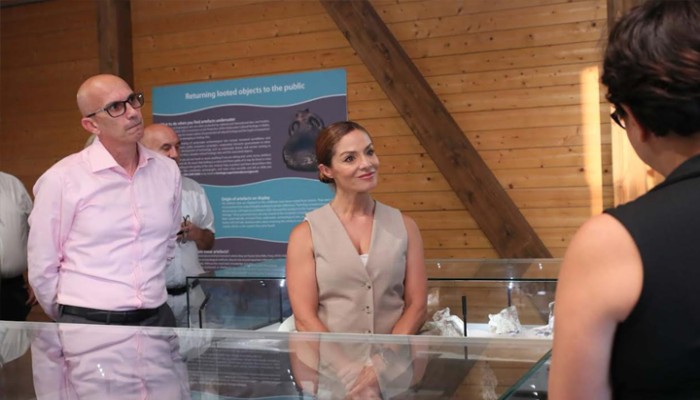
Through a collaboration between the Environment and Resources Authority, Ambjent Malta, and Birdlife Malta with the financial support of the Gal Majjistral Foundation, Malta’s first Salt Museum has opened at Salina. Minister for the Environment, Energy, and Regeneration of the Grand Harbour Miriam Dalli and BirdLife Malta CEO Mark Sultana inaugurated the Salina Salt Museum on Friday evening.
To mark this occasion, an open weekend, Salt Fest 2024, is being organised today, Saturday 27th July, and tomorrow, Sunday 28th July, from 4pm till 8pm. This family-friendly event will feature a variety of activities for all ages to enjoy.
“The museum marks Malta’s history of salt production. It represents the commitment to preserving Malta's culture, history, and natural beauty. By protecting our unique heritage, we help people appreciate the natural world,” said Minister Miriam Dalli.
BirdLife Malta CEO Mark Sultana stated that the museum will serve as a reminder that in the past, sustainability was an important principle, and when a natural mineral was being extracted, this was done with great respect for nature itself. This is the type of tradition we should be proud of. “BirdLife Malta would like to thank the Superintendence for Cultural Heritage for immediately believing in the idea of the salt museum and providing materials and expertise in the process. We also thank Pauline Dingli and Joe Borg for several artifacts and exhibits loaned to this museum,” Mark Sultana said.
€100,000 were invested in this project thanks to funds from the Gal Majjistral Foundation under the LEADER program. It continues to transform Salina Nature Reserve into a unique site in the Maltese Islands that offers visitors a blend of culture, history, and environmental biodiversity coexisting in harmony. The site’s main aim is to keep alive the tradition and culture related to salt production and harvesting in the Maltese Islands. The Knights of St John constructed the saltpans in this area in the 16th century. The entire complex also includes several wooden huts that were reconstructed in the 18th century by the British in the same style as the original structures. These structures had different purposes related to salt production in this area. Today, one of these huts has been transformed into a visitor center that welcomes visitors to the site, while the new museum is housed in another of these structures. Salina had been rehabilitated through a €7 million project partially financed with EU funds under the Agricultural Fund for Rural Development 2007–2013 and the site is protected as part of the Natura 2000 network and is also a Special Area of Conservation (SAC) because of the endemic flora and fauna which can be found in the area. Following the official opening of the Salt Museum on Friday evening, an event attended by several special guests, the museum is now open to the public for Festa Melħ | Salt Fest 2024, an open weekend full of different activities being held today and tomorrow, Saturday and Sunday, at Salina. Between 4pm and 8pm on both days, those visiting the site can participate in a number of different activities taking place to celebrate the opening of the museum.
Apart from free entry to the museum this weekend, the program of activities also includes stands related to traditional crafts, including those for children, nature sessions, workshops on the use of Neolithic tools such as bones, stones, and shells to craft jewelry, a book presentation and a pot-painting session. There will also be food and drink stalls on site, and the public can enjoy breathtaking views of the saltpans while discovering more about the history and the rich heritage related to salt harvesting.
By commenting you are accepting our Comment Policy.